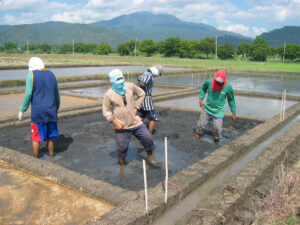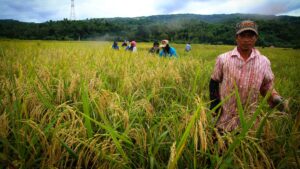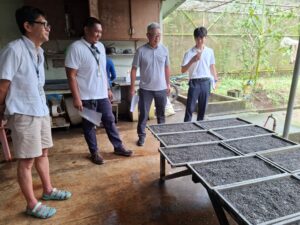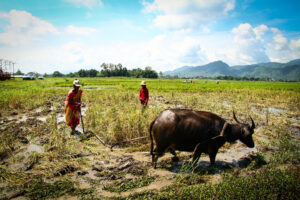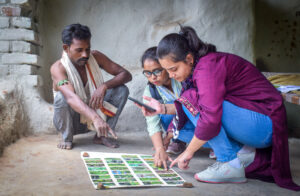By Danica Louise C. Sembrano
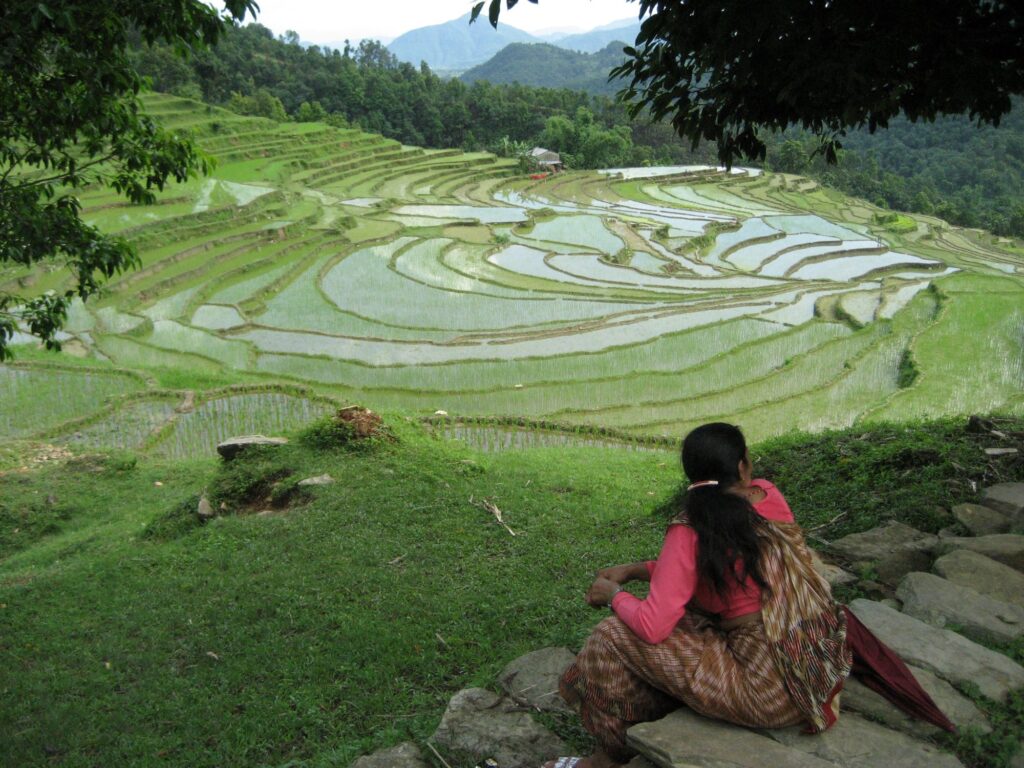
In Nepal, where agriculture supports more than half of the population, having sustainable access to quality and well-adapted seeds before the cropping season begins can make a difference. Research shows that quality seeds alone can lead to a 20-30% increase in yields (Devkota and Shrestha, 2020). Yet for maize and wheat farming households in the mountainous regions, this remains a recurring challenge despite interventions to improve seed security.
Wheat and maize, next to rice, are among Nepal’s most staple crops. A recent study surveyed 250 households in Mandan Deupur and Panchpokhari Thangpal municipalities in Bagmati Province to find out how gender, ethnicity, socioeconomic status, and exposure to shocks affect household seed security. Under the lens of the FAO seed security framework, it revealed new insights on how these factors affect availability, accessibility, varietal suitability, and quality.
No one-size-fits-all seed system
The research found a stark contrast in how households source their maize and wheat seeds. Maize is mostly sourced from formal market channels, particularly local agro-veterinary suppliers or agrovets, emphasizing the crucial role of market access in ensuring seed availability. However, even with formal market access, affordability and suitability of varieties remain barriers for poorer households, particularly in more remote communities. Notably, households with year-round food sufficiency were better able to secure maize seeds, highlighting the link between broader food security and seed access.
Meanwhile, wheat seeds flow mainly through informal systems such as farmer seed saving, borrowing, and exchanges with neighbors. These traditional practices remain important in helping households maintain access when formal markets are unreliable or costly. However, when households are more exposed to formal wheat seed markets, they often report lower seed security, as reliance on purchased seed sometimes disrupts resilient local exchange networks. Education and larger landholdings improved wheat seed access, but marginalized households remain vulnerable to seed insecurity, especially Dalit communities.
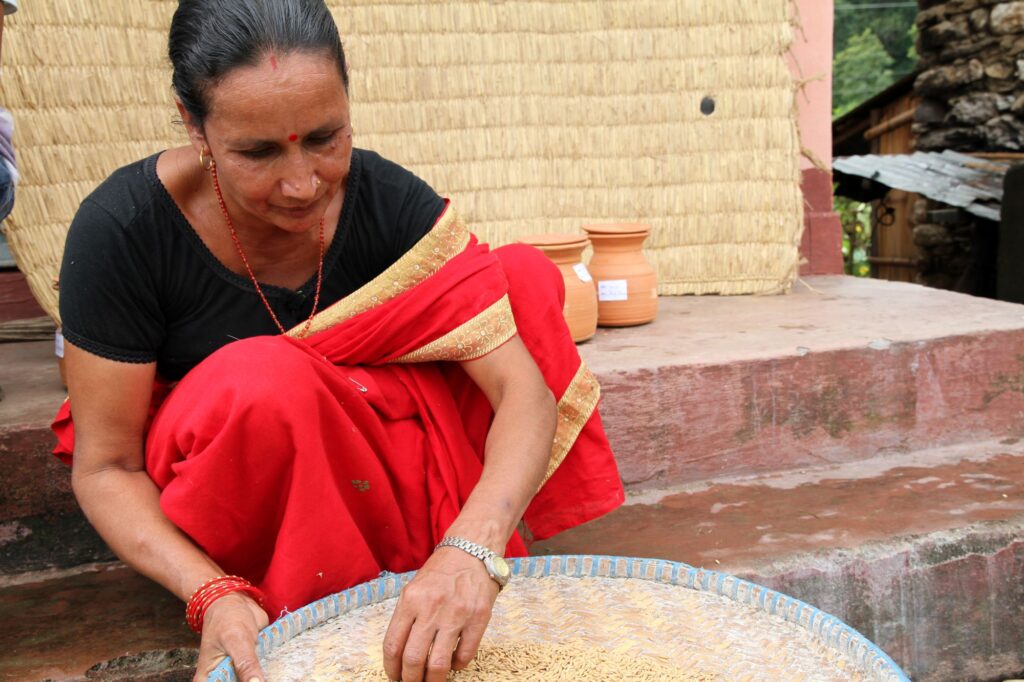
Women as seed keepers
As the trend of men migrating for foreign employment rises, women are also shouldering more responsibility for seed-related decision selection, saving, and exchange. More than half of all Nepalese households have a family member who has migrated for work. Nepal Census data shows that out of the 2.2 million Nepalese abroad in 2021, around 80 percent were male.
Findings revealed that women-led households enhance seed security for both maize and wheat. Women’s active roles in choosing varieties, saving high-quality seed, and sustaining exchange networks contributed to better availability and suitability within the FAO framework. Yet Nepal’s established gender norms still limit their recognition and support, as seed purchasing and variety choices often remain dominated by men.
Women leading seed innovations
A parallel story also reflects Nepal’s rice sector. Women are stepping up to take larger roles in farming, though with limited support and slower access to agricultural resources, such as good-quality seeds.
In Rautahat District, for example, women-led cooperatives and seed entrepreneurs are emerging as innovators to bring profitable gains in their communities. With support from the National Rice Research Program (NRRP), IRRI and the Shree Krishna Mahila Krishi Sahakari Sanstha Limited, a women-led cooperative, supplied foundation seeds and provided technical trainings, allowing women seed producers to produce and sell certified seed worth over NPR 1.8 million (≈ USD 13,500) in a single season.
Similar initiatives in Bardiya and Kailali are strengthening capacity in seed production, quality control, and marketing, resulting in expanded farmer access to quality rice seed across rainfed and irrigated ecologies, higher household incomes, and a demonstration that gender-inclusive partnerships can simultaneously advance seed security and food-system resilience.
Building a more inclusive, pluralistic seed systems
While the way farmers source their seeds for maize and wheat differs, the fact remains that there are still not enough seeds by the time the cropping season arrives. Researchers recommend recognizing and supporting pluralistic seed systems, both formal and informal, calling the need for crop-specific interventions.
Most importantly, by valuing women’s significant contributions to the seed system, Nepal can move closer to ensuring that farming households, especially in its mountainous areas, have timely access to affordable, suitable, and high-quality seeds.
“Women are the backbone of seed security,” said Dr. Hom Gartaula, IRRI Senior Scientist for Gender and Social Research. “As custodians of household food security and holders of unique knowledge of how crops are cultivated, consumed, and conserved, they are indispensable to sustaining resilient seed systems and safeguarding our food future.”
References:
Atreya, K., Gartaula, H. N., & Kattel, K. (2025). Household seed security: A case of maize and wheat seed systems in the mountains of Nepal. Agricultural Systems, 229, 104419. https://doi.org/10.1016/j.agsy.2025.104419
Devkota, K., & Shrestha, R. B. (2020). Strengthening community-based seed systems for improving food and nutrition security in Nepal. In R. B. Shrestha, E. Penunia, & M. Asim (Eds.), Strengthening seed systems: Promoting community-based seed systems for biodiversity conservation and food & nutrition security in South Asia (pp. 125–144). SAARC Agriculture Center; Asian Farmers’ Association; Pakistan Agricultural Research Council.
Bhatt, P. R., Hossain, M., Nayak, S., Tharu, R. K., & Sah, J. (2025). Women-led cooperatives and seed entrepreneurs drive seed innovation in Nepal. Rice Today. International Rice Research Institute. https://ricetoday.irri.org/women-led-cooperatives-and-seed-entrepreneurs-drive-seed-innovation-in-nepal
National Statistics Office. (2023). National population and housing census 2021 (National report). Kathmandu, Nepal. https://censusnepal.cbs.gov.np/results/files/result-folder/National%20Report_English.pdf

